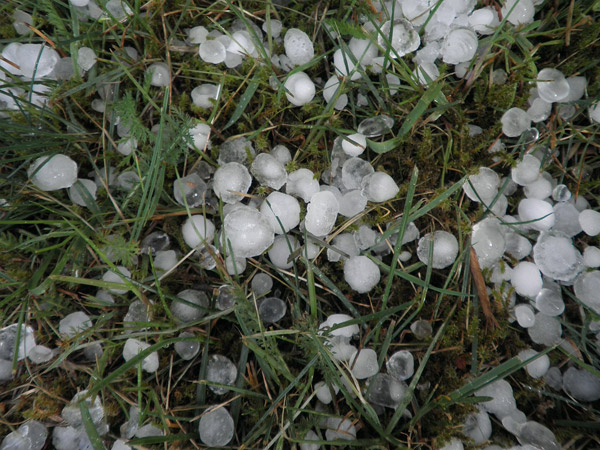When it comes to hail storms, damage from large chunks of ice aren’t the only thing to worry about. These storms are also known to come with high winds and rain. This can be a recipe for disaster as high winds can bring down trees and power lines. On top of that, large hail can cause significant damage to your roof, siding, and any vehicles parked outside. If this happens to you below is a list of things to look for before you file the claim.
How to check your home for hail damage:
Take Pictures Pictures are a must in this type of situation, especially if the damage is severe enough to file an insurance claim. Pictures give you proof that your claim is compatible with the damage that has been done to your home.
Check Your Roof
- Roof Shingles – When it comes to checking your roof after a hail storm, bruises, indents, and cracks are probably one of the first indicators of roof damage. These imperfections can be found by running your hand across a shingle or sometimes are obvious if the indents are large enough. You may also notice missing or loose granules, this can also be a sign that you shingles have taken some hail damage.
- Uplifting shingles, around chimney/gutters – When checking your shingles, be sure to pay close attention around chimneys and gutters. These areas tend to be easier for shingles to lift up when there are high winds.
- Loose nails – If you come across any nails that are loose or protruding during your inspection, this is a strong indicator of roof damage. All lost or loose nails should be replaced to help decrease the chance of further damage.
- Gutters and downspout – If you are unable to get on top of your roof, an easier way to check your home for hail damage is to look at your downspout and gutters. If you see any indents present, this a sure sign of damage that may include your roof as well.
- Plumbing stacks – Another telltale sign that your roof has been damaged is to take a look at your plumbing stack. This is a pipe that comes out of your roof with a rubber boot around the base. You should check to see if the rubber is lifted up, or if there are any cracks in the rubber.
- Skylights condition – If you have skylights; these should be on the top of your list to check after a hailstorm. They are more prone to damage compared to shingles, especially due to the direct impact from hail on the glass. Skylights can be checked for cracks from your rooftop or from the inside of your home.
Check other areas outside your home
- Landscape light fixtures – Another indicator that there is hail damage is to check out your exterior light fixtures to see if there are any cracks or indents from the hail.
- Examine all windows – Windows on your house should be examined if there are noticeable dings on your home’s siding. High winds can cause the hail to pelt against your windows if it’s strong enough.
- Air conditioner – Another target for hail damage is an air conditioning unit since they typically are uncovered during the storm season. If the hail is large enough, it could dent and damage your AC unit.
- Fence and garage door – Other exterior fixtures to check are fences and garage doors. Similar to windows, these can be damaged from high winds that cause hail to fly diagonally.
Are you covered for hail and wind damage to your property? Before the storms strike this spring, make sure your home is properly insured, give one of our knowledgeable insurance agents a call at (616) 949-9000 or get a FREE no obligation insurance quote online!

